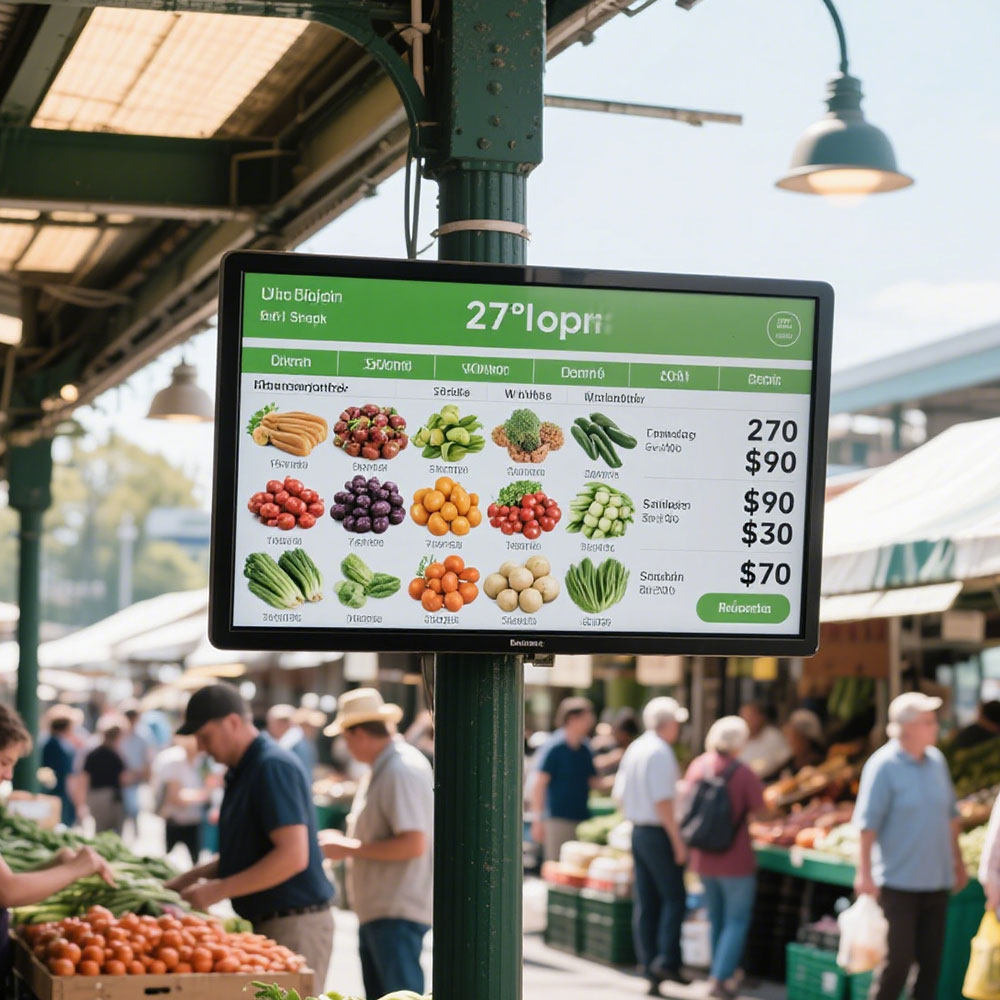
Privacy statement: Your privacy is very important to Us. Our company promises not to disclose your personal information to any external company without your explicit permission.
Outdoor LCD displays are increasingly essential in modern infrastructure, especially in industries such as transportation, retail, public safety, and energy. When deployed in harsh environments—such as sub-zero temperatures, high humidity, intense UV exposure, or heavy rainfall—the reliability of these displays becomes critical. To ensure consistent performance and longevity, manufacturers must address key design factors including brightness, ingress protection (IP rating), thermal management, and durability under mechanical stress.
One of the most important specifications is brightness. Outdoor displays typically require at least 5,000 nits of peak brightness to remain visible under direct sunlight. Higher-end models used in airports or highway signage often exceed 7,000 nits. This ensures content remains legible even during midday glare. Additionally, advanced anti-glare coatings and polarized filters reduce reflections without compromising color accuracy—a crucial feature for digital advertising or real-time information boards.
Environmental resistance is another vital aspect. A minimum IP65 rating is recommended for outdoor use, protecting against dust ingress and low-pressure water jets. For applications near coastal areas or industrial zones, IP68 or even IP69K ratings may be necessary to withstand high-pressure washing and extreme temperature fluctuations. These ratings also correlate with longer operational life spans and reduced maintenance costs.

Thermal management systems are equally important. In cold climates, internal heaters prevent condensation and screen freezing, while in hot regions, active cooling via fans or heat sinks prevents overheating. Some premium units incorporate intelligent thermal sensors that adjust brightness and fan speed dynamically based on ambient conditions—an energy-efficient strategy that extends component life.
Material choice also impacts performance. Aluminum frames provide structural rigidity and excellent heat dissipation, while polycarbonate or tempered glass offers impact resistance and scratch protection. For long-term deployment, corrosion-resistant components and conformal coatings on circuit boards help mitigate damage from moisture and chemical exposure.
Finally, remote monitoring and diagnostics support proactive maintenance. Many modern outdoor LCDs include built-in network connectivity (Ethernet or 4G/LTE) that allows system administrators to monitor uptime, brightness levels, and error logs in real time. This reduces downtime and enhances ROI through predictive maintenance capabilities.
In summary, deploying outdoor LCD displays in extreme weather demands a holistic approach combining high-brightness technology, robust environmental protection, smart thermal control, durable materials, and remote management tools. Whether for traffic management, retail kiosks, or utility asset monitoring, choosing the right solution ensures visibility, reliability, and cost-effectiveness across diverse global climates.
Email to this supplier

Privacy statement: Your privacy is very important to Us. Our company promises not to disclose your personal information to any external company without your explicit permission.